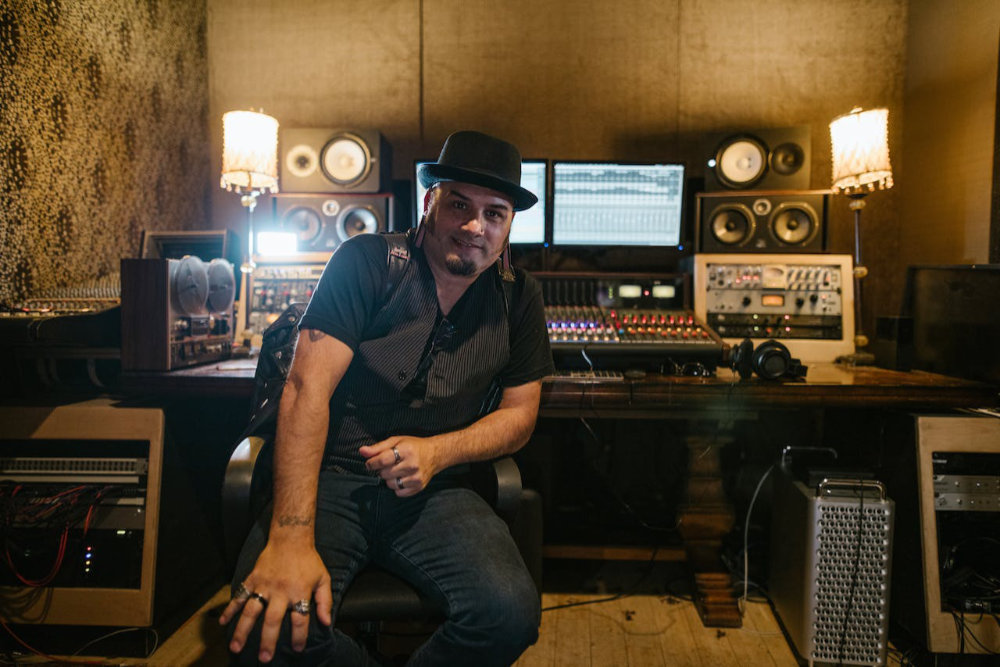Estimated reading time: 9 minutes
Music has the power to move us, to make us tap our feet and nod our heads in time with the beat. But have you ever wondered what gives music its rhythmic structure? That’s where the concept of a downbeat comes in. In this article, we will explore the fascinating world of downbeats and discover why they are so important in creating the rhythmic foundation of music.
Table of contents
- Understanding time signatures and measures of music
- What is a downbeat?
- The significance of the downward stroke
- The role of the downbeat in creating rhythmic structure
- The technical definitions of a downbeat
- Examples of famous songs with prominent downbeats (James Brown, Chuck Berry)
- Assessing the strength of the downbeat – strong accent and unaccented beat
- Differentiating the downbeat from other beats (upbeat, backbeat)
- Table about Differentiating the downbeat from other beats (upbeat, backbeat)
- The rhythmic pattern of the downbeat
- The role of the snare drum in emphasizing the downbeat
- The basic unit of the downbeat in different time signatures
- Why understanding the downbeat matters in music performance and composition
- Research and studies on the importance of the downbeat (Cambridge University Press)
- Conclusion: Appreciating the power and significance of the downbeat in musical rhythm
- FAQ
Understanding time signatures and measures of music
Before we delve into the intricacies of downbeats, let’s first understand some basic musical terms. One such term is the time signature, which appears at the beginning of a piece of sheet music and consists of two numbers stacked on top of each other. The top number indicates how many beats are in each measure of music, while the bottom number represents the type of note that receives a single beat.
For example, a time signature of 4/4, also known as common time, means that there are four beats per measure and a quarter note receives one beat. This is the most commonly used time signature in popular music. Other time signatures, such as 3/4 (waltz time) or 6/8 (compound time), have different rhythmic feels.
What is a downbeat?
Now that we have a basic understanding of time signatures and measures, let’s explore what exactly a downbeat is. In simple terms, a downbeat is the first beat of a measure, often indicated by a downward stroke of the conductor’s arm or the foot tapping the ground. It is the strongest beat in the measure and serves as the reference point for the rest of the rhythmic structure.
The significance of the downward stroke
The downward stroke, whether it’s the conductor’s arm or the foot tapping the ground, is not just a mere gesture. It has a profound effect on the rhythmic feel of a piece of music. When the downbeat is emphasized, it gives a sense of stability and grounding to the rhythm. It helps the listener to establish a clear sense of pulse and makes it easier to follow along with the music.
The role of the downbeat in creating rhythmic structure
The downbeat plays a crucial role in creating the rhythmic structure of a piece of music. It establishes the framework within which all the other beats and rhythms are organized. Just like the foundation of a building, the downbeat provides stability and sets the rhythmic foundation for the entire piece.
The technical definitions of a downbeat
In technical terms, a downbeat is defined as the first beat of a measure, which is usually the strongest beat in a musical measure. It is often represented by the number “1” in the time signature. For example, in a time signature of 4/4, the downbeat occurs on the first beat of each measure.

Examples of famous songs with prominent downbeats (James Brown, Chuck Berry)
To better understand the concept of a downbeat, let’s look at some examples of famous songs that have prominent downbeats. One such song is “I Got You (I Feel Good)” by James Brown. The iconic guitar riff that opens the song is a classic example of a strong downbeat. The rhythmic emphasis on the first beat of each measure gives the song its infectious groove.
Another example is “Johnny B. Goode” by Chuck Berry. The opening guitar riff, with its unmistakable emphasis on the downbeat, sets the tone for the entire song. It is a perfect illustration of how a strong downbeat can create a sense of anticipation and excitement in the music.
Assessing the strength of the downbeat – strong accent and unaccented beat
Not all downbeats are created equal. While the downbeat is generally the strongest beat in a measure, it can be further emphasized through a strong accent. This accent can be achieved through various means, such as playing the note louder, using a different instrument to emphasize the beat, or applying a specific articulation.
On the other hand, the beats that follow the downbeat, known as unaccented beats, are typically less emphasized. They serve as a contrast to the strong downbeat and help to create rhythmic tension and release in the music.
Differentiating the downbeat from other beats (upbeat, backbeat)
Now that we have a clear understanding of what a downbeat is, it’s important to differentiate it from other beats that are commonly used in music. One such beat is the upbeat, which is the last beat of a measure. Unlike the downbeat, which is emphasized and gives a sense of stability, the upbeat leads into the downbeat and creates a sense of anticipation.
Another term often associated with the downbeat is the backbeat. The backbeat refers to the emphasis on beats two and four in a measure, typically found in genres like rock and pop music. While the backbeat provides a strong rhythmic drive, it is important to note that it is not the same as the downbeat. The downbeat is the foundation on which the backbeat is built.
Table about Differentiating the downbeat from other beats (upbeat, backbeat)
| Beat | Definition | Characteristic |
|---|---|---|
| Downbeat | The first beat of a measure, usually the strongest beat. | Emphasized and provides stability. |
| Upbeat | The last beat of a measure, leading into the downbeat. | Creates a sense of anticipation. |
| Backbeat | The emphasis on beats two and four in a measure, commonly found in pop music. | Provides a strong rhythmic drive, but not the same as the downbeat. |
The rhythmic pattern of the downbeat
Now that we have explored the differentiating factors of the downbeat, let’s take a closer look at its rhythmic pattern. In most cases, the downbeat is represented by a strong, steady pulse that serves as the foundation for the entire piece of music. It is the heartbeat that keeps the music alive and moving forward.
The rhythmic pattern of the downbeat can vary depending on the time signature and the style of music. In simple time signatures, such as 4/4 or 2/4, the downbeat is often represented by a quarter note or a half note. In compound time signatures, like 6/8 or 9/8, the downbeat is usually represented by a dotted quarter note or a dotted half note.
The role of the snare drum in emphasizing the downbeat
One instrument that plays a significant role in emphasizing the downbeat is the snare drum. The snare drum is often used to mark the strong beats in a measure, including the downbeat. Its sharp and distinctive sound cuts through the music and adds a sense of emphasis to the rhythm.
In genres like jazz and marching band music, the snare drum is particularly important in accentuating the downbeat. The drummer uses various techniques, such as rimshots and accents, to make the downbeat stand out and drive the rhythm forward.

The basic unit of the downbeat in different time signatures
To fully grasp the concept of the downbeat, it is essential to understand its basic unit in different time signatures. In simple time signatures like 4/4 or 2/4, the downbeat is represented by a single beat, typically a quarter note. This means that there are four quarter notes in each measure, with the downbeat occurring on the first beat.
In compound time signatures like 6/8 or 9/8, the downbeat is represented by a dotted quarter note or a dotted half note. These time signatures have a different rhythmic feel, with the downbeat occurring on the first beat of each measure, followed by two or three additional beats.
Why understanding the downbeat matters in music performance and composition
Understanding the concept of the downbeat is crucial for musicians and composers alike. In performance, a clear understanding of the downbeat helps musicians stay in sync with each other and maintain a cohesive rhythmic feel. It allows for precise and accurate timing, ensuring that the music flows smoothly and effortlessly.
In composition, the downbeat serves as the framework for creating rhythmic patterns and structures. It provides a sense of order and organization to the music, allowing the composer to create tension and release by manipulating the placement of the downbeat and the emphasis on other beats.
Research and studies on the importance of the downbeat (Cambridge University Press)
The significance of the downbeat in music has been the subject of research and studies by scholars and musicologists. One such study published by Cambridge University Press explored the role of the downbeat in rhythmic perception. The study found that the downbeat plays a vital role in how we perceive and interpret rhythm, and it significantly influences our sense of musical timing.
The researchers concluded that the downbeat serves as a reference point for the listener, helping them navigate through the rhythmic complexities of a piece of music. It provides a sense of predictability and structure, making it easier for the listener to follow along and experience the music in a meaningful way.
Conclusion: Appreciating the power and significance of the downbeat in musical rhythm
In conclusion, the downbeat is the heartbeat of music. It is the first beat of a measure, often emphasized by a downward stroke, and it serves as the foundation for the rhythmic structure of a piece. Understanding the downbeat is crucial for musicians and composers, as it helps in performance, composition, and creating a sense of order and organization in music.
So, the next time you find yourself tapping your foot or nodding your head to the beat of a song, remember that it all starts with the downbeat. It is the driving force that gives music its rhythmic power and makes it impossible for us to resist its infectious groove.
FAQ
A downbeat is the first beat of a measure, often indicated by a downward stroke, and it serves as the foundation for the rhythmic structure of a piece of music.
The downbeat is the first beat of a measure, while the upbeat is the last beat that leads into the downbeat. The downbeat provides stability, while the upbeat creates a sense of anticipation.
The snare drum is often used to mark the strong beats in a measure, including the downbeat. Its sharp and distinctive sound adds emphasis and drive to the rhythm.
Understanding the downbeat helps musicians stay in sync with each other and maintain a cohesive rhythmic feel. It allows for precise timing and ensures that the music flows smoothly.
Yes, there have been studies conducted by Cambridge University Press that highlight the role of the downbeat in rhythmic perception and its influence on our sense of musical timing.
